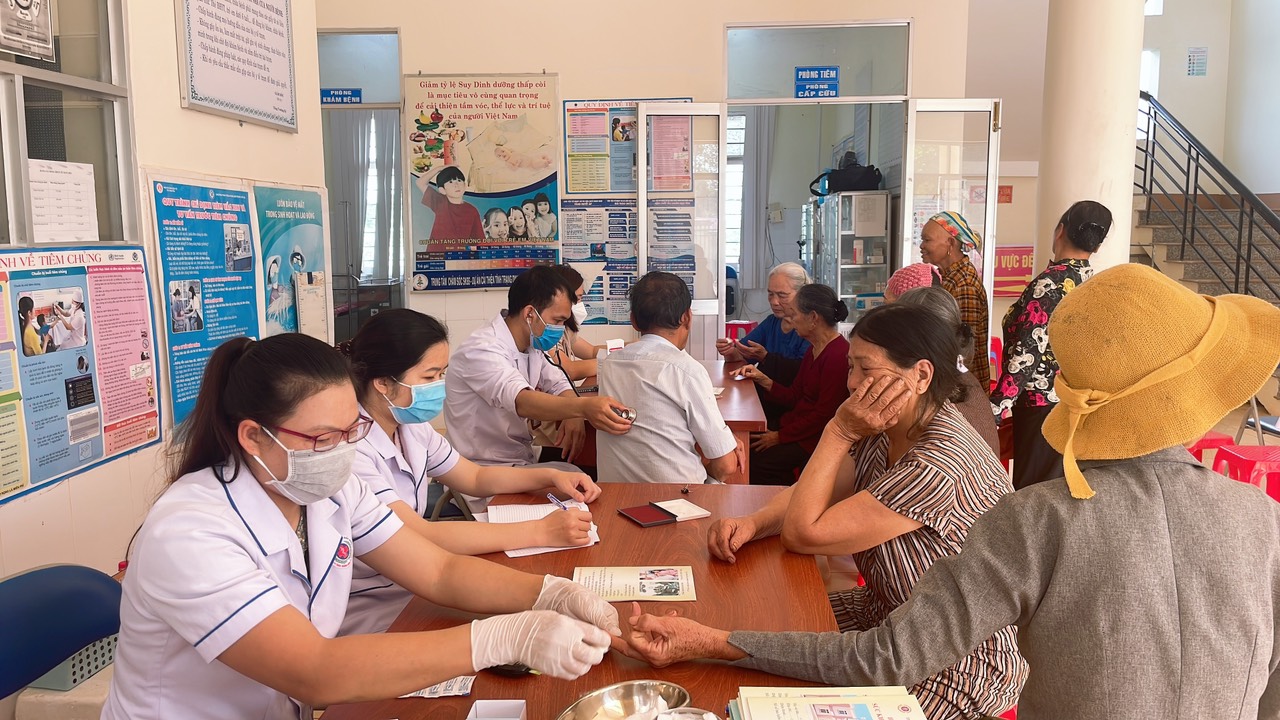Plan for prevention and control of infectious diseases for 2024 in Vietnam
What are the objectives set out in the Plan for Prevention and Control of Infectious Diseases for 2024 in Vietnam? – Thanh Hang (Binh Phuoc)

Plan for prevention and control of infectious diseases for 2024 in Vietnam (Internet image)
Regarding this issue, LawNet would like to answer as follows:
On February 2, 2024, the Minister of Health issued Decision 266/QD-BYT on the Plan for prevention and control of infectious diseases for 2024 in Vietnam.
Plan for prevention and control of infectious diseases for 2024 in Vietnam
The 2024 Infectious Disease Prevention and Control Plan sets the following specific goals:
(1) Developing legal documents and professional guidance
- Complete the dossier to develop the Law on Disease Prevention project to ensure progress according to the Plan of the Government and the National Assembly.
- Advise on promulgation of the Decree amending and supplementing a number of articles of Decree 104/2016/ND-CP regulating vaccination activities; Complete and promulgate Circulars: Circular stipulating basic medical service packages implemented by commune-level health stations, and Circular replacing Circular 38/2017/TT-BYT promulgating a list of infectious diseases, scope, and subjects required to use vaccines and medical biological products; Building economic and technical norms for medical quarantine and preventive medicine services and coordinating to develop a Circular stipulating maximum prices for medical quarantine and preventive medicine services at public medical facilities in accordance with the provisions of the Law on Prices 2012.
- Develop projects to implement Resolution 218/NQ-CP dated December 18, 2023 on Plan to implement Resolution 99/2023/QH15, develop a plan to implement the Prime Minister's Conclusion on COVID-19 epidemic prevention and control in Notice No. 494/TB-VPCP dated November 29, 2023 on the conclusions of the National Steering Committee for COVID-19 Prevention and Control at the online conference summarizing COVID-19 prevention and control work of the National Steering Committee for COVID-19 Prevention and Control with localities; and develop a set of technical and professional criteria for the Provincial Center for Disease Control.
- Develop, update, and supplement projects, plans, and professional guidance in monitoring, preventing, and controlling infectious diseases and epidemics: Projects to implement Resolution 218/NQ-CP dated December 18, 2023 on Plan to implement Resolution 99/2023/QH15 dated June 24, 2023 of the National Assembly; set of criteria and quality standards for industrial non-business services according to the provisions of Decree 32/2019/ND-CP dated April 10, 2019 of the Government; set of technical and professional criteria for the Provincial Center for Disease Control;
Guidelines for surveillance and prevention of infectious diseases; Guidelines for integrated sentinel surveillance of influenza and COVID-19 syndrome; Supervision instructions: focus on hand, foot, and mouth; Guidelines for epidemiological zoning of common parasitic diseases; Event-based surveillance guidelines and guidelines for diagnosis and treatment of infectious diseases.
(2) Implement general professional and technical targets
- Maintain the achievement of eradicating polio and eliminating neonatal tetanus.
- The rate of full vaccination in the Expanded Immunization Program for children under 1 year old reaches ≥ 90% at the commune level.
- The rate of pregnant women vaccinated with the tetanus vaccine is >85%.
- 100% of border medical quarantine subjects are supervised, examined, and treated medically according to regulations, ensuring early detection and promptly handling disease cases according to regulations, minimizing disease intrusion and spread.
- Ensure that newly arising diseases and epidemics are detected and handled promptly.
- Ensure that officials working in epidemic prevention and control receive continuous training and education on emerging and re-emerging infectious diseases.
- Ensure staff working in statistics and reporting on infectious diseases are trained in surveillance, information, and reporting of infectious diseases.
- Ensure that medical staff working in medical examination departments, internal Medicine and Infectious Diseases departments are trained in infection control and given guidance on diagnosis and treatment.
(3) Implement specific targets for some infectious diseases
3.1. Ebola, MERS-CoV, and influenza A (H7N9): Minimize disease entry and spread in the country.
3.2. Influenza A (H5N1), influenza A (H5N6), and other dangerous and emerging infectious diseases: 100% of outbreaks were detected and treated promptly, preventing outbreaks in communities and medical facilities .
3.3. COVID-19, monkeypox: Minimize the number of severe illnesses and deaths.
3.4. Dengue
- Number of cases/100,000 people: <150/100,000.
- Mortality rate: <0.09%.
- Percentage of clinical cases tested for virus type: 3%.
- Maintain regular vector monitoring at at least 2 points managed by the province/city and 1 point managed by the district/town/city.
3.5. Malaria
- Incidence rate: <0.5/100,000 people.
- Death rate: ≤ 0.002/100,000 people.
3.6. Rabies: Controlled ≤ 85 deaths.
3.7. HFMD
- Incidence rate: < 100/100,000 people.
- Mortality rate: < 0.05%.
3.8. Cholera: 100% of outbreaks were detected and treated promptly to prevent spread in the community.
3.9. Measles/rubella
- Incidence rate: <5/100,000 people.
3.10. Whooping cough, diphtheria, Japanese B encephalitis and other infectious diseases in the Expanded Program on Immunization: decreased by 5% compared to the average period 2016-2020.
- Key word:
- infectious diseases
- in Vietnam
- Cases of land rent exemption and reduction under the latest regulations in Vietnam
- Economic infrastructure and social infrastructure system in Thu Duc City, Ho Chi Minh City
- Regulations on ordination with foreign elements in religious organizations in Vietnam
- Increase land compensation prices in Vietnam from January 1, 2026
- Determination of land compensation levels for damage during land requisition process in Vietnam
- Who is permitted to purchase social housing according to latest regulations in Vietnam?
-

- Ministry of Health of Vietnam issues economic ...
- 17:50, 21/11/2024
-

- Emergency response and search and rescue organizations ...
- 10:29, 11/09/2024
-

- Handling of the acceptance results of ministerial ...
- 09:30, 11/09/2024
-

- Guidance on unexploded ordnance investigation ...
- 18:30, 09/09/2024
-

- Sources of the National database on construction ...
- 16:37, 09/09/2024
-

- Notable new policies of Vietnam effective as of ...
- 16:26, 11/04/2025
-
.Medium.png)
- Notable documents of Vietnam in the previous week ...
- 16:21, 11/04/2025
-
.Medium.png)
- Notable documents of Vietnam in the previous week ...
- 16:11, 02/04/2025
-
.Medium.png)
- Notable new policies of Vietnam to be effective ...
- 16:04, 02/04/2025
-
.Medium.png)
- Notable new policies of Vietnam effective from ...
- 14:51, 21/03/2025

 Article table of contents
Article table of contents
